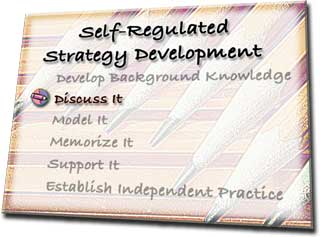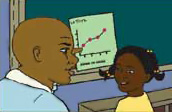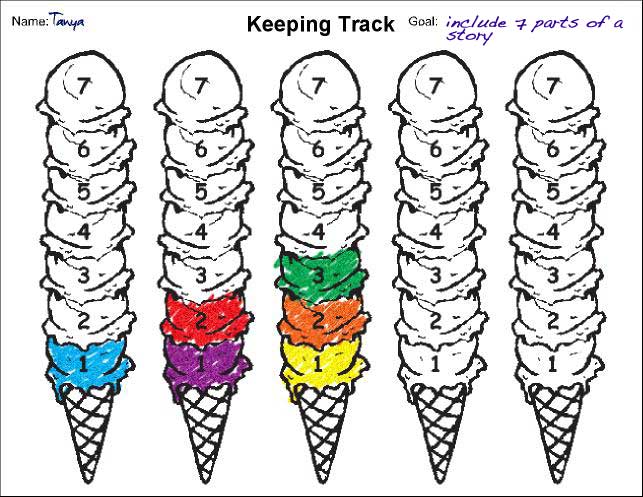What procedures might Ms. Lin suggest?
Page 5: Discuss It

The next step is for Mr. Carter to introduce the second instructional stage in the SRSD model—discuss the strategy. In this stage, Mr. Carter will:
- Help his students to understand the benefits of using a strategy
- Teach his students to learn how and when to use a particular strategy
- Emphasize the importance of student effort, motivation, and self-talk
- Explain to his students that once they learn a strategy, they can use it during different kinds of activities and in different situations
- Describe ways to measure self-monitoring, a skill that can be helpful in understanding goal setting
 Mr. Carter is teaching his class a writing strategy called WWW, What=2, How=2. Having discussed the writing strategy with his entire class, Mr. Carter next meets individually with those students who require more assistance. He begins by pointing out their current performance in a positive manner and then sets about helping these students to set goals and to monitor their own progress. For example, when Mr. Carter meets with Tanya, they determined that her goal will be to include all seven parts of a story rather than only three parts. In order to monitor her progress, he shows her how to track her performance.
Mr. Carter is teaching his class a writing strategy called WWW, What=2, How=2. Having discussed the writing strategy with his entire class, Mr. Carter next meets individually with those students who require more assistance. He begins by pointing out their current performance in a positive manner and then sets about helping these students to set goals and to monitor their own progress. For example, when Mr. Carter meets with Tanya, they determined that her goal will be to include all seven parts of a story rather than only three parts. In order to monitor her progress, he shows her how to track her performance.
WWW, WHAT=2, HOW=2
Mr. Carter introduces the POW strategy—a general planning strategy—to his students. In this writing strategy, “P” stands for “pick a topic,” “O” stands for “organize my notes,” and “W” stands for “write and say more.” Next, Mr. Carter uses SRSD to teach his students the WWW, What=2, How=2 strategy to help them with the “O” in POW—”organize my notes.”



Pick my idea.
Organize my notes.
Write and say more.
WWW, What=2, How=2
Who is the main character?
When does the story take place?
Where does the story take place?
What does the main character do or want to do? What do other characters do?
What happens then? What happens with the other characters?
How does the story end?
How does the main character feel? How do the other characters feel?
(Adapted from Powerful Writing Strategies For All Students, by K. R. Harris, S. Graham, L. Mason, and B. Friedlander, 2008, p. 116.)
Tracking Performance
Mr. Carter explains to Tanya that each time she writes a sentence, she gets to color in a scoop of ice cream.

(Adapted from Powerful Writing Strategies For All Students, by K. R. Harris, S. Graham, L. Mason, and B. Friedlander, 2008, p. 121.)
To view a teacher discussing the WWW, What=2, How =2, click on the movie clip below (time: 1:17).
Transcript: Discuss The Strategy
Teacher: We have POW, right? And we’re going to learn a trick for “Organize our notes.” And this is for stories, and it’s called “WWW, What=2, How=2.” So first I’ll tell you the three Ws. “Who is the main character?” What’s a character? Victor?
Victor: Somebody in the story.
Teacher: Somebody in the story. Katie, what’s an example of a character?
Teacher: The first W is “Who is the main character?” Do you only need one main character?
Class: No.
Teacher: No. You can have two, three. You can have lots of main characters, and you can have other characters. Does it always have to be a person?
Class: No.
Teacher: No. It can be an animal. It can be a character from Greek mythology, you know, Zeus, who’s a God. It doesn’t have to be a real person. It could be a made-up person. The second W is “When does the story happen?” What’s an example of “When?” Victor?
Victor: Um, 1995.
Teacher: 1995. Will?
Will: January 1, 1883.
Teacher: Very good. Kathleen?
Kathleen: Maybe it’ll happen in modern times.
Teacher: In modern times.